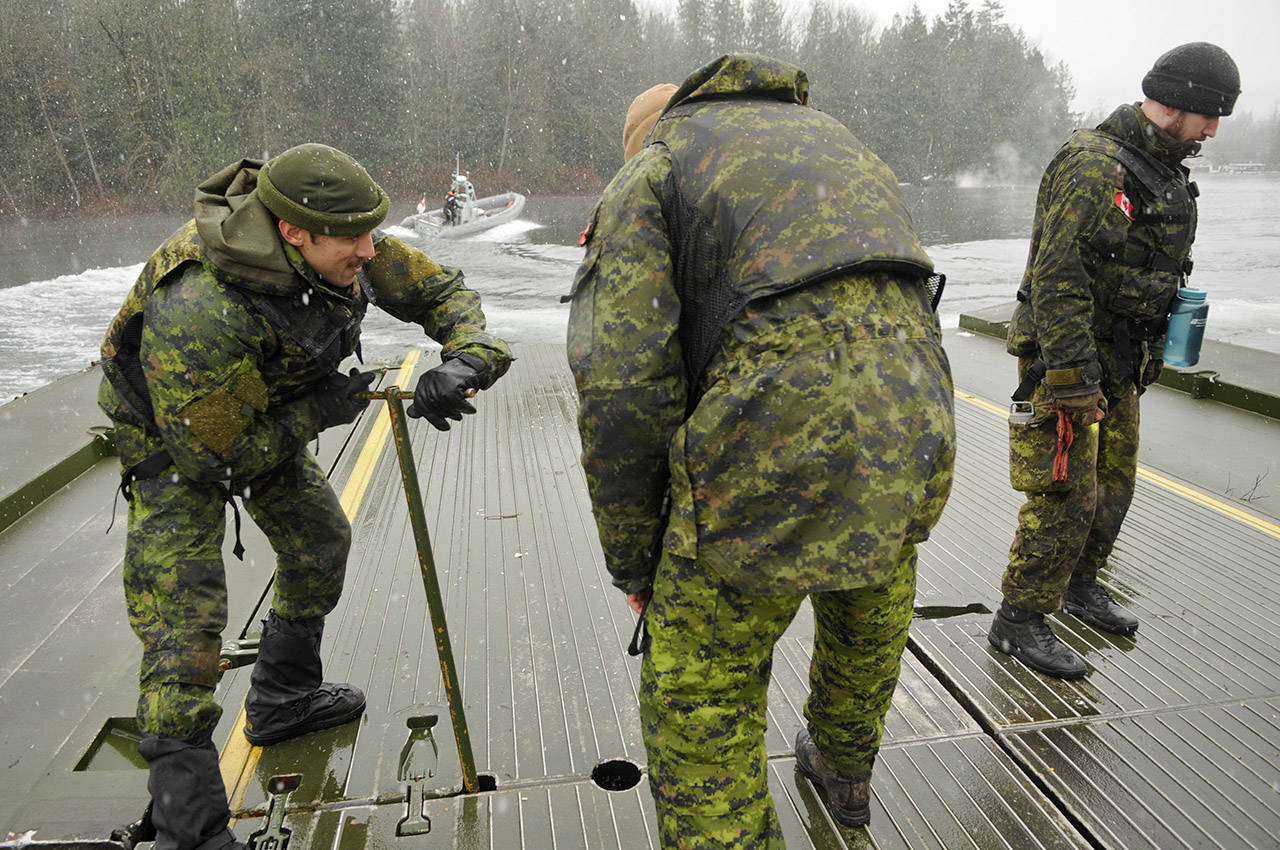More than 300 military engineers and personnel gathered in Chilliwack over the holiday season to brush up on their bridge-building skills.
Exercise Paladin Response is an annual event for army reserve combat engineers where they practise building various types of bridges over water and land gaps, plus refreshing other skills for domestic response. They were training for five days, from Dec. 26 to 30.
“This is all about the skills we need to help Canadians in times of need. Typically that will be natural disasters (such as) floods, fires, any kind of a seismic event,” says Major Nils French of 39 Combat Engineer Regiment.
Split into six troops of 30 engineers each, the groups were stationed at the Colonel Roger Kenwood St. John Armoury (former CFB), Maple Bay in Cultus Lake, and the OPSEE Training Area (just east of Cultus Lake).
They were assembling three different types of bridges. ACROW bridges are heavy-duty structures put together using equipment. They are used to replace a bridge that has been destroyed, or used to build bridge as temporary alternate route.
In 2017, during the flooding in Laval, Quebec there was a community that was cut off and it was an ACROW bridge that was built to evacuate the victims. It was the first time the engineers deployed as a troop since the Second World War, said one engineer.
The other two bridges include a medium girder bridge and a raft bridge.
Medium girder bridges are assembled mostly by hand where troops are lifting pieces weighing up to 600 lbs each.
Raft bridges (medium floating bridge) are assembled section by section right on a body of water. With a ramp on either end, the raft bridges can act like a ferry to move vehicles from one shore to another and they are moved around by powerful boats attached to either side.
The engineers also updated their training on communications, assault boats (inflatable rubber boats used to get supplies to locations, or evacuate people, similar to Search and Rescue), and rigging (using poles, cables, and ropes to transport equipment or even personnel across an obstacle).
Exercise Paladin Response has been running for 20 years in Chilliwack. The city is the ideal location for the exercise as all the necessary resources are here: a lake, a river, some form of gap to bridge, plus a lot of the equipment needed for the training.
Our mild winters also play a role. With lakes that don’t freeze over and no need for snow removal or ice maintenance, Chilliwack is a prime spot for Exercise Paladin Response.
It is one of the largest exercises that the military engineers do in Canada where the entire engineer corps comes together to train. Every reserve combat engineer regiment in Canada was in town from Vancouver to St. Johns, Newfoundland.
The combat engineers were joined by other military personnel including medics, Royal Canadian Navy, Canadian Forces School of Military Engineering, people trained in vehicle maintenance, engineer equipment, logistics, signals/communication, and even the Royal Canadian Air Force who flew in about 100 troops on military aircraft.
@PhotoJennalism
jenna.hauck@theprogress.com
Like us on Facebook and follow us on Twitter.
